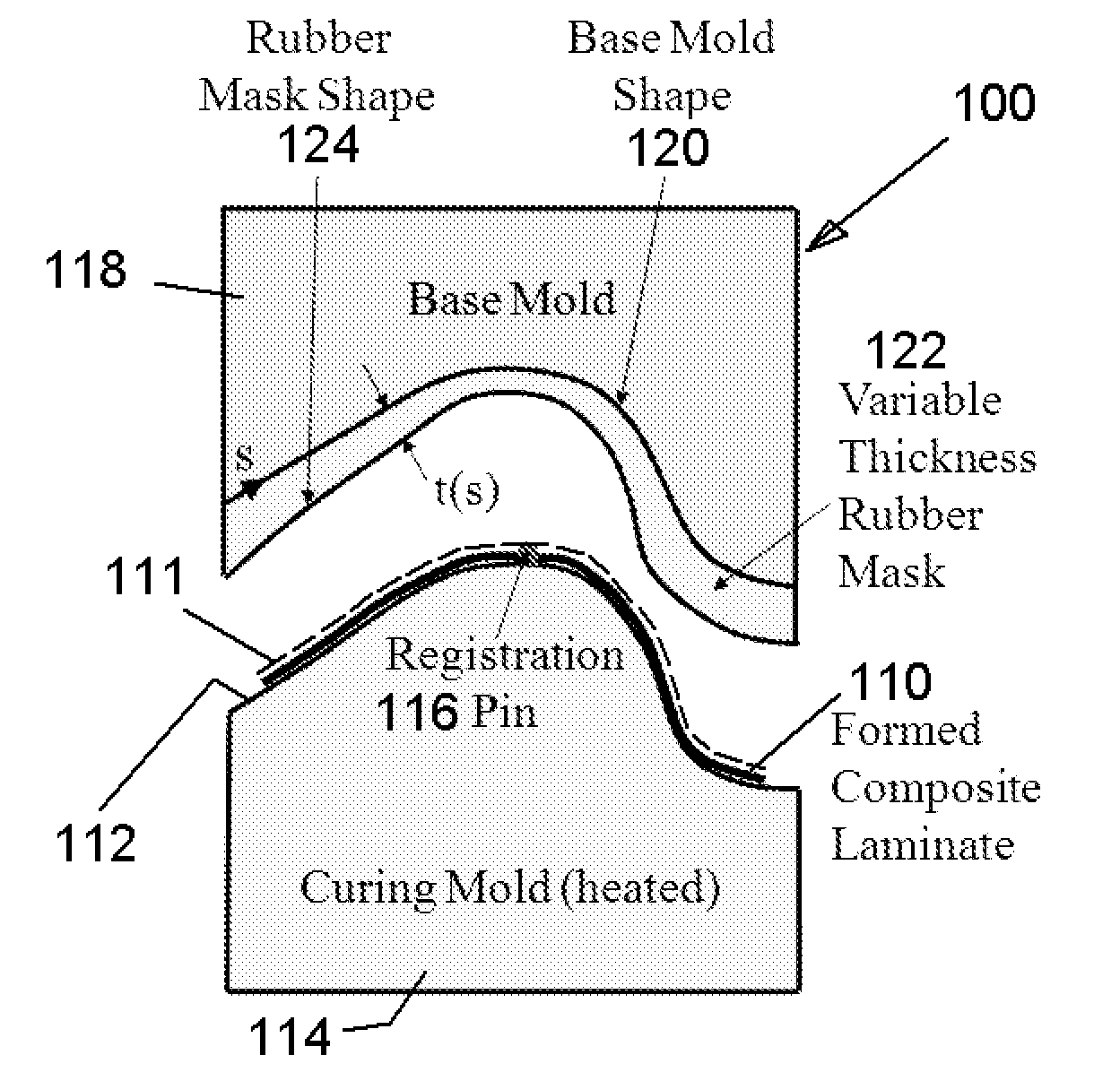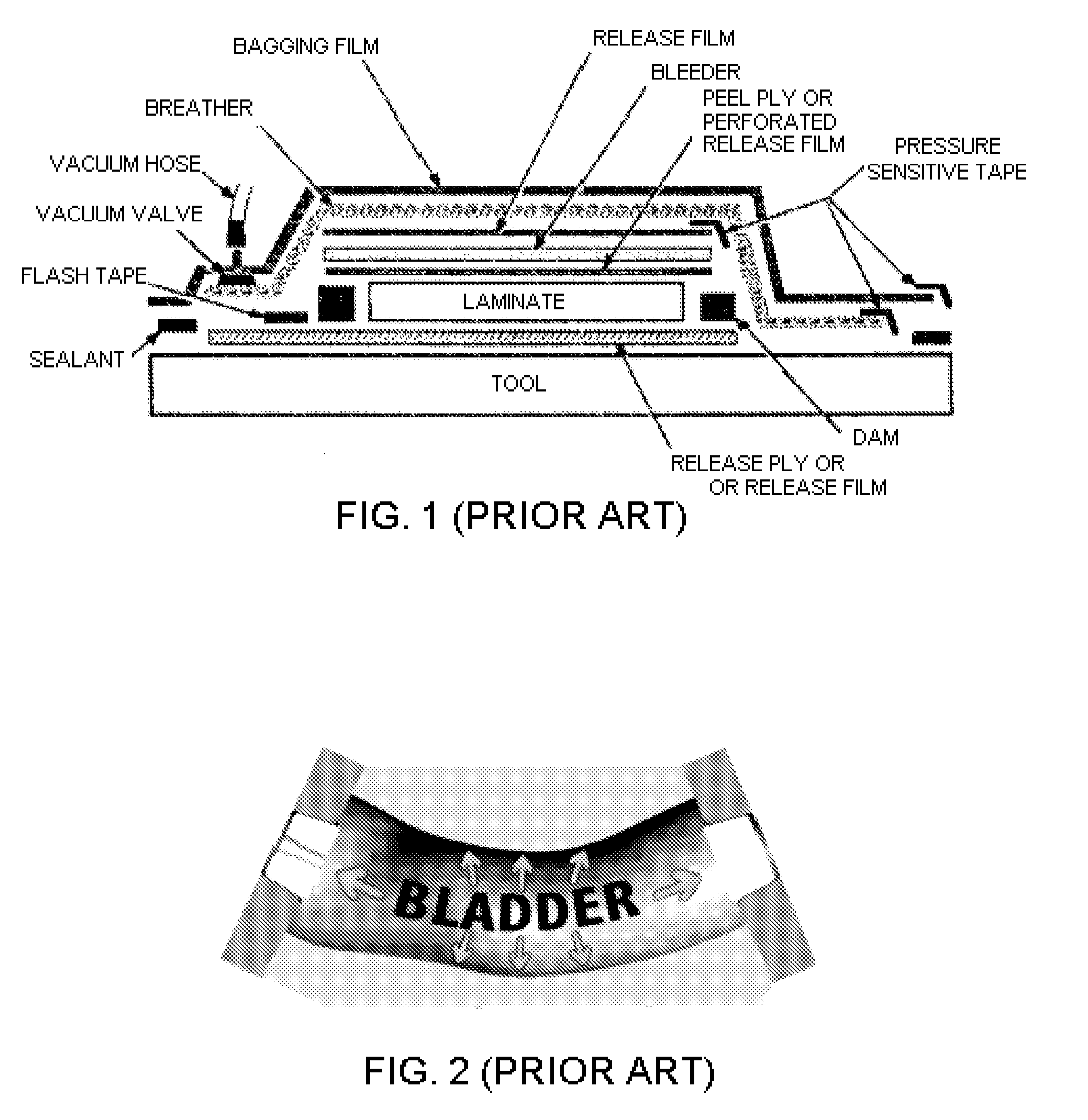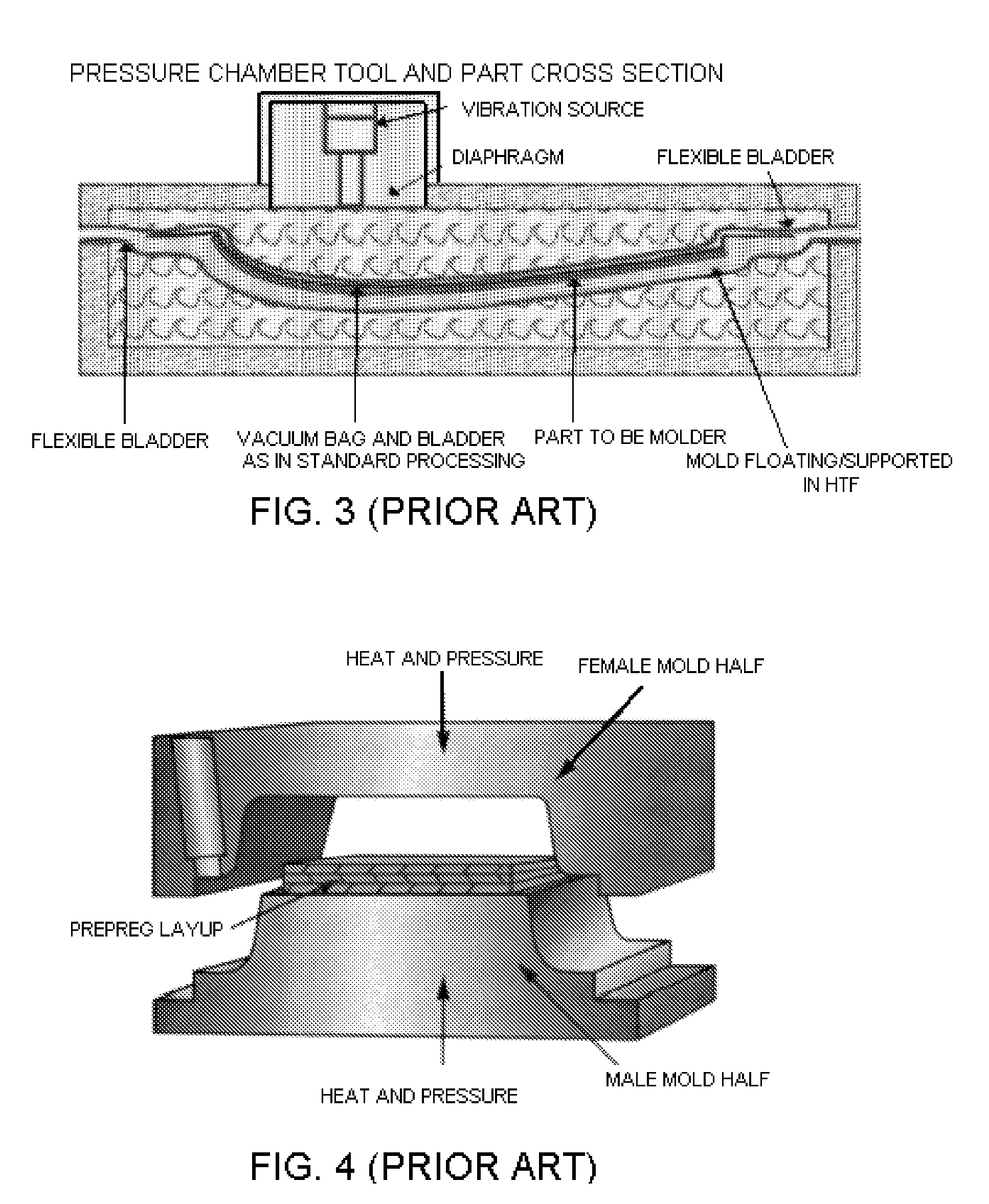Consolidating and Curing of Thermoset Composite Parts by Pressing Between a Heated Rigid Mold and Customized Rubber-faced Mold
a thermoset composite and mold technology, applied in the field of composites, can solve the problems of uniform pressure distribution over the part surface, unfavorable heat loss of thermoset composite parts, and inability to guarantee the uniform pressure of laminate parts, so as to facilitate the release of the part from the mold, reduce heat loss, and ensure the effect of positioned accuracy
- Summary
- Abstract
- Description
- Claims
- Application Information
AI Technical Summary
Benefits of technology
Problems solved by technology
Method used
Image
Examples
Embodiment Construction
[0052]Referring now to the drawings, in which like reference numerals are used to refer to the same or similar elements, FIGS. 5 and 6 show the apparatus and method of the invention for forming a cured composite part without using an autoclave. The invention involves using a mold set 100 and placing a composite laminate 110, consisting of layers of woven or unidirectional fibers in a thermoset polymer matrix, onto a three-dimensional curing surface 112 of a heatable and temperature-controlled curing mold 114 of the mold set. A conventional bleeder cloth layer 111 is also added on top of the laminate to allow the escape of excess gas and resin during part curing, but it is removed after the process is completed and is not part of the final composite. The position of the composite laminate 110 is registered against lateral movement on the curing surface 112 by one or more registration pins 116 extending from the curing surface and through the composite laminate. Registration pins may ...
PUM
| Property | Measurement | Unit |
|---|---|---|
| pressure | aaaaa | aaaaa |
| temperatures | aaaaa | aaaaa |
| energy | aaaaa | aaaaa |
Abstract
Description
Claims
Application Information
 Login to View More
Login to View More - Generate Ideas
- Intellectual Property
- Life Sciences
- Materials
- Tech Scout
- Unparalleled Data Quality
- Higher Quality Content
- 60% Fewer Hallucinations
Browse by: Latest US Patents, China's latest patents, Technical Efficacy Thesaurus, Application Domain, Technology Topic, Popular Technical Reports.
© 2025 PatSnap. All rights reserved.Legal|Privacy policy|Modern Slavery Act Transparency Statement|Sitemap|About US| Contact US: help@patsnap.com



